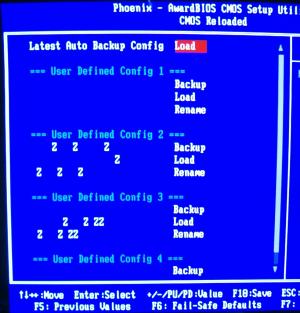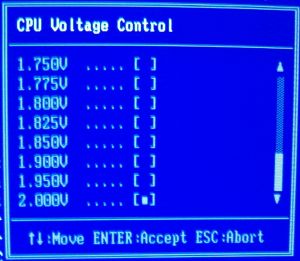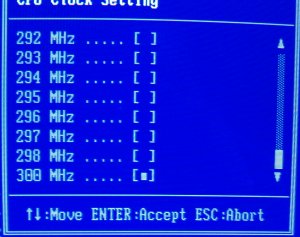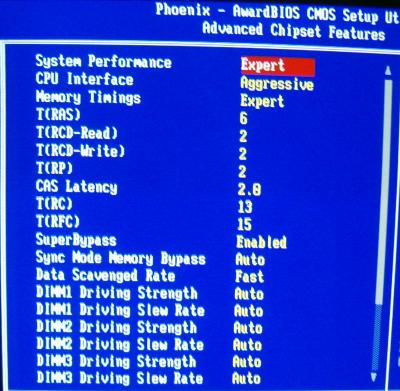BIOS
The Genie BIOS is your usual AWARD implementation with DFI's own vendor supplied section for board tweaking. It has a twist however, in the form of CMOS Reloaded, something you might have spotted on the sticker adorning the PCI slots when I talked about the layout.DFI are justifiably proud of the feature, which allows you to easily save and load up to four lots of BIOS settings, effectively giving the BIOS profile support. I'm not sure who implemented it first, DFI, ABIT, or indeed some other company, but I hope it's something implemented on all boards in the future. I used it to quickly switch between benchmark and overclocked front side bus profiles, while testing those features for the review, and it certainly seemed to work OK. Here's a shot of it in action. You're free to rename them as you see fit, for easy reference.

It's not quite a dual BIOS situation, like Gigabyte give you, but it's a nice extension of the usual AWARD features.
The Genie menu option gives you access to all hardware tweaking options provided by the BIOS. DFI go a long way to appeasing the tweaker, with extensive voltage ranges for chipset, CPU and memory modules. Up to 2.0V on the CPU, 1.9V on the chipset and 3.3V (good god) on the memory, you certainly shouldn't hanker after much more than that in your quest for maximum performance.


Front side bus speeds are available from 100MHz to 300MHz, in 1MHz increments. Criminally, there's no option to key in a desired figure, instead you're limited to scrolling through the two hundred entry list manually. Not too bad when you get to an option that befits your CPU, since straying much either side won't happen to a large extent, but being able to key in a value, like EPoX let you with their BIOS', would be better.

Finally, you get access to a large range of memory related settings, including the usual CAS-Trp-Trcd-Tras grouping. Here's the benchmarked settings.

Trc (active to precharge time) and Trfc (refresh row cycle time) are settings not usually exposed, indeed I've only seen them publically modifiable on recent K8T800 Athlon 64 boards, before now that is. They were left at BIOS detected defaults throughout testing.
System setup now.









